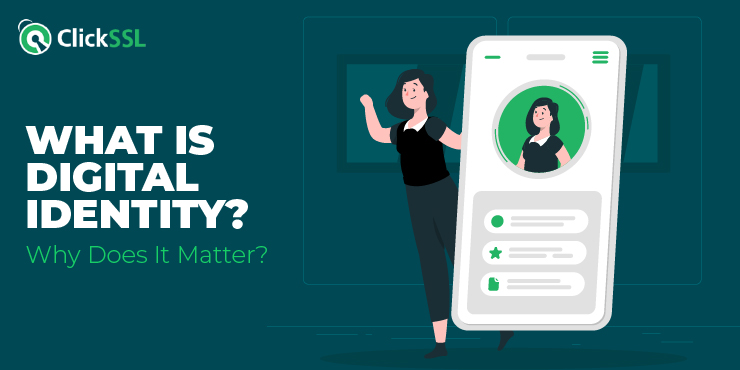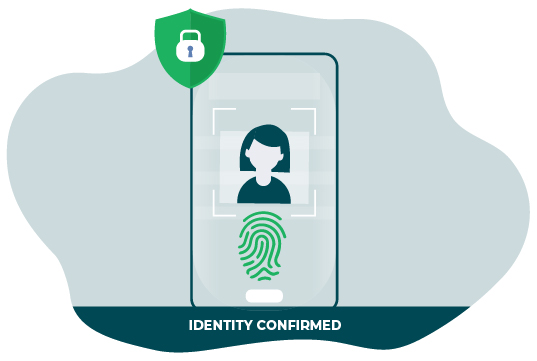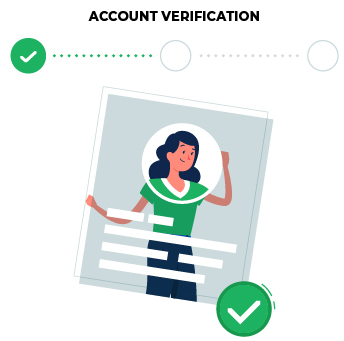Digital Identity is a technical concept that shows a relation between a human and its digital presence.
Did you know that, a staggering combined total of at least 100,000 incidences of personal data breaches and identity theft are recoded yearly? Those are estimates for the US alone.
This grim reality emphasizes two things about digital identity;
- The urgent need to comprehend its meaning and
- The implication of protection our digital identities
After all, we live in an age where information superhighways, digital landscapes, and online identities have taken on their own lives. They do not only shape how we are perceived and influence our interactions. They can also impact our safety and that of our associates and loved ones.
What is a Digital Identity?
Digital identity can consist of credentials, entitlements and several accounts that are attached to you. So, it can be simply defined as a one-to-one relationship you have with your online presence. Here are some examples of digital identity elements:
Personal Information
Personal information includes details like your name, and date of birth. It also includes your physical address, and forms the foundation of your digital identity.
Email Addresses
Your email address is a means of communication and an integral part of your digital identity. It is like your online mailing address, through which you receive messages and notifications and access various online platforms.
Usernames and Passwords
Just like a key to a locked door, usernames and passwords grant access to your personal accounts, like social media profiles, online banking, and email accounts. They are unique identifiers that authenticate your digital identity. They also protect your online presence.
Social Security Numbers
While primarily associated with identity verification in the physical world, social security numbers have also become part of our digital identities. They serve as crucial identifiers in certain online transactions and interactions, acting as a layer of verification.
Passport Numbers
Your passport number, which allows you to travel and establish your identity internationally, also finds its place in the digital space. It can be required when engaging in activities such as online travel bookings or international financial transactions.
Online Search Activities
Your digital identity extends to online search activities. From the search phrases you use, to the websites you visit, and the content you engage with online, all these activities shape the digital footprint you leave behind. This information can be tracked and analyzed to gain insights into your interests. They can also help in defining your preferences, and behaviors.
Purchasing History or Behavior
Your digital identity also encompasses your purchasing history or behavior. Here, it runs the gamut from the products you buy online, to the services you subscribe to. Purchasing history is behavior also to the advertisements you interact with. Businesses rely on this data to better understand your preferences and tailor their offerings to your own unique needs.
What are the Different Types of Digital Identity?
For any business with a solid online presence, understanding the different types of digital identities is almost necessary. This allows for easier implementation of robust verification processes.
A well-implemented digital identity verification process can ensure your users’ legitimacy and protect them against fraudulent activities. And what’s more, you can establish trust and provide the most secure environment for social interactions and online transactions. Here are the different types of digital identity verification processes;
Document Verification
This is one of the most common methods of digital identity verification. It involves uploading or capturing a picture of an official identification document.
The preferred document types usually include a passport or driver’s license. Once captured, this information is scrutinized to ensure its authenticity.
This allows for individuals to establish their identity online. For instance, when customers are applying for their online banking accounts, they may be prompted to submit scanned copies of their driver’s license. Or national identity cards, etc.
Once captured, the information from these documents would be used to verify their identity. It is only after the identity verification is complete that they can be granted access to financial services.
Identity Verification
Identity verification processes typically involve individuals submitting personal identifying information (PII) about them. To validate users’ identities, this information would then be cross-checked against databases.
The specific pieces of information is verified here may include details like full names, and dates of birth. If needed, addresses, and social security numbers may also be checked.
A good example is when creating a seller account on a reputable e-commerce platform. Here, users may be asked to provide their personal identifying information (PII) which would then be verified against existing records to ensure the legitimacy of their digital identity.
Biometric Verification
Biometrics involves capturing unique physiological or behavioral traits difficult to forge. These include facial recognition, fingerprints, or voice patterns.
Examples include unlocking a smartphone using facial recognition or providing a fingerprint scan to access a high-security facility. These biometric markers serve as a virtual lock and key. They grant access only to individuals whose digital identity matches the biometric data on file.
When it comes to digital identity verification processes, SSL certificates also play a key role. They’re cryptographic protocols for establishing secure connections online—between web server and browser.
They assure users that the website they are interacting with is legitimate. And what’s more, they give the surety that personal information is not just encrypted but also protected when in transit.
If you install an SSL certificate correctly on your website, you should see secure padlock lock icon in address bar.
Why is Digital Identity Important?
Digital identity’s efficiency extends beyond just user experience. Internal teams within organizations can redirect their focus from manual verification to more value-added tasks. Here are the key benefits of digital identity;
Location-Independence
This is one of the most obvious advantages of digital identity. From bank branches, to university offices, and government agencies, traditional identity verification often requires individuals to be physically present at specific locations.
However, with digital identity, individuals can prove their identity remotely. Imagine the convenience of opening a bank account, enrolling in a university course, or purchasing age-restricted products without needing physical presence. Digital identity empowers individuals to navigate these processes seamlessly, saving time and effort.
Enhanced Security and Fraud-Detection
As technology advances, so does the sophistication of malicious actors seeking to exploit personal information. Digital identity provides a stronger layer of security and enables efficient fraud-detection measures.
Speed and Efficiency
Let’s face it; we live in a fast-paced world where time is of the essence. Here’s where digital identity fits in nicely again. It offers unparalleled speed and efficiency. Manual identity verification processes often involve time-consuming tasks and paperwork. This mostly causes delays and frustration for both businesses and individuals.
However, with digital identity, AI-powered automation streamlines the verification process, eliminating the need for manual intervention.
How to Use Digital Identity to Protect Your Business?
Leveraging the potential of digital identity can be real a game-changer if you’re keen about safeguarding your enterprise. Besides, it should not be hard to implement it.
Key Instances to Employ Digital Identity Verification to Protect your Business
- Opening accounts: Verifying the identity of customers is crucial. It is true in case of financial services. Digital identity verification technology allows businesses in the banking sector and similar institutions to streamline the account opening processes.
- Age verification: Many services and transactions require customers to meet specific age requirements. Digital identity can play a pivotal role in verifying customers’ ages, preventing businesses from engaging in restricted transactions.
- High-risk transactions: Certain transactions involve high stakes, like large financial transfers. In such cases, re-verifying or authenticating a customer’s digital identity can provide an extra layer of protection against potential fraud.
Here are some of the best methods businesses can employ to verify digital identity effectively:
- ID Record Check: This approach involves conducting database checks against comprehensive datasets, including voter registers and consumer, credit, and utility databases. It provides a low-friction solution for customers while validating their information.
- Proof of Address Check: Establishing proof of address is crucial in meeting Anti-Money Laundering (AML) regulations during customer onboarding. Verifying customers’ addresses enhances security and compliance.
- Document Verification: Document verification offers a higher level of confidence in a customer’s identity by validating the authenticity of legal documents. This method is particularly useful when regulatory mandates or the risk of fraud necessitate additional verification.
- Biometric Verification: Leveraging biometrics, such as facial recognition, ensures that the person presenting an identity document is its legitimate owner. This enhances security, meets compliance requirements, and provides the groundwork for future biometric authentication.
- Watchlist Check: Screening users against various databases, including sanction lists and politically exposed persons (PEPs), helps identify potential risks at the onboarding stage and ongoing monitoring. It safeguards the business from engaging with individuals who may pose threats.
Closing Thoughts for Digital Identity
For business, digital identity isn’t just any fancy term. If you’re keen to stay ahead of potential digital safety mishaps, understanding what it entails is paramount.
And not just that, it would be best to also master how to use it to protect your business. So, it isn’t really wise to keep waiting. Take the right steps now so your business can operate with confidence in the ever-evolving digital landscape.
Recommended Reading:




